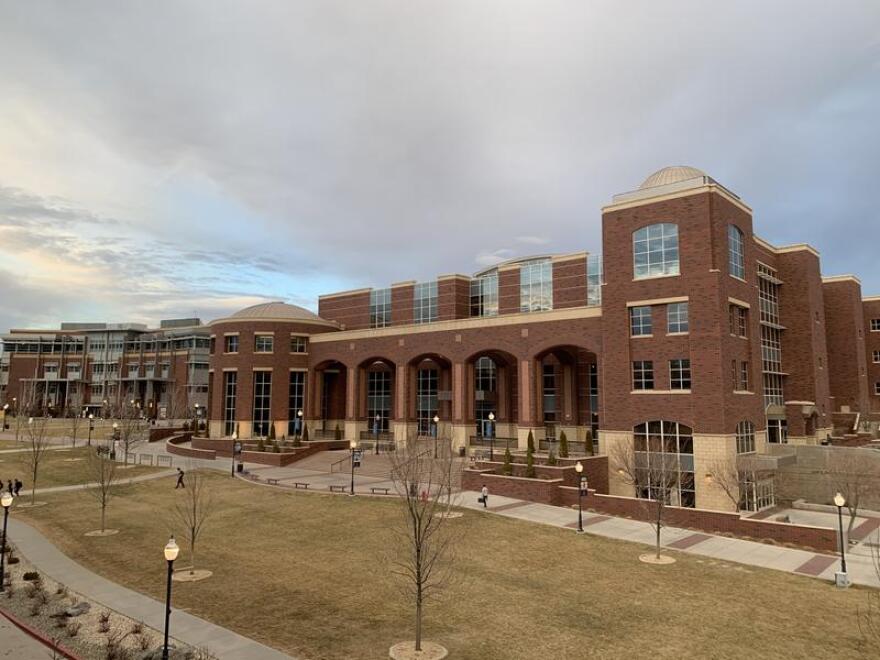When Governor Steve Sisolak issued stay-at-home orders in mid-March, colleges and universities in Nevada took the unprecedented step of moving all classes online. Now, much like the rest of the state, schools are looking for ways to safely reopen ahead of the fall semester.
But at the University of Nevada, Reno, a large portion of the faculty are taking issue with the administration’s plan to move to what’s called a HyFlex model — where half the students will be in the classroom while the other half will be online. KUNR’s Paul Boger spoke with Professor Melissa Burnham, Vice President of the Nevada Faculty Alliance (NFA), to discuss those concerns.
PAUL BOGER: Professor Burnham, your group, the Nevada Faculty Alliance is circulating a petition calling on the UNR administration to address a handful of concerns ahead of the upcoming fall semester. What are those concerns?
MELISSA BURNHAM: So one of the safety issues [is] being in enclosed spaces. We know that's where the outbreaks are happening. They're talking about only allowing half of the capacity of the room in at any given time. So mask-wearing distance within the classroom [is a concern]. We think that most students will align with the policy, will wear their masks, but it's kind of hit or miss whether people are actually following the direction to wear a mask or not. In public, there's safety concerns regarding faculty who might be in an at-risk category. They can petition. They can fill out paperwork with the university, with the HR department, to receive accommodations to be able to teach fully online. But, in order to do that, it's a process of filling out forms and getting medical documentation and things like that that people may or may not feel willing to disclose.
BOGER: Your group has taken issue with the school’s moving to this “HyFlex” model of teaching. It's where half the students are in person and the other half are online and they switch every other class. What's at issue with that particular model?
BURNHAM: We, I think, prefer as faculty members, most of us prefer to teach in person because it's much easier to facilitate that kind of engagement in class when you're in person, but for safety sake, trying to do both at the same time, literally at the same time, is a challenge to think about. How do you do really good online instruction with breakout rooms and chat features and monitoring all of that? While at the same time, engaging the students who are there with you in person. Can they even get into small groups in person? You know, in some cases the Zoom breakout rooms are actually a safer model for small groups because you're not in the same room together. You're not in danger of shouting at each other across a six-foot gap in a small classroom.
BOGER: At the end of the day, what would you like to see the university do to address your concerns?
BURNHAM: Maybe a survey, even of students, really reaching out [and] describing what the in-person will look like — the in-person experience that it will be every other class or every class. Your classes are not going to be synchronized. Of course, if you have four classes on Monday, Wednesday, Friday, some of them you might be in person today, and in some of them, you might be in the Zoom group. They should know about the disinfecting and the mask-wearing procedures and social distancing. This is the plan, and this is what it's going to look like. This is what your responsibilities will be if we do this HyFlex or mixed delivery model. So, do you prefer that or would you prefer to take your classes — the majority of them — all online? It would be nice to have faculty surveyed as well to find out what their preferences would be. [This is] my ultimate goal. I think the NFA’s ultimate goal is to make sure that faculty feel comfortable in requesting accommodations, requesting to be able to teach fully online, but it shouldn't just be based on a medical condition that I have or a family member has. I think pedagogically, I know what works for my classes and I know how I could do this online pretty well. And I wish I had that choice.
KUNR reached out to the university for comment. In a statement, Vice Provost for Faculty Affairs Jill S. Heaton said “there are many voices that we are listening to in crafting our plans for the Fall… Faculty and students have choices and processes for requesting teaching and learning accommodations. Faculty, and all other University employees may apply for alternative work arrangements, leave, or accommodations.”
As a note of disclosure, the Nevada System of Higher Education owns the license to this station.







